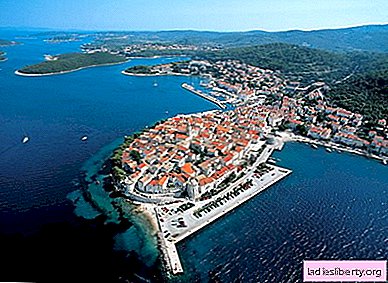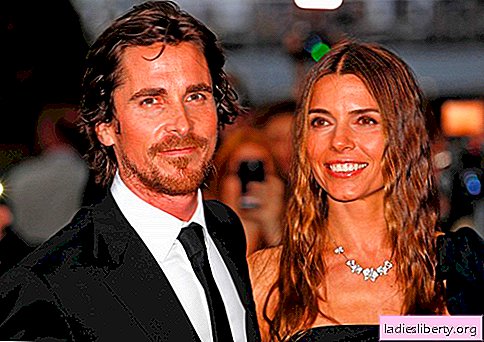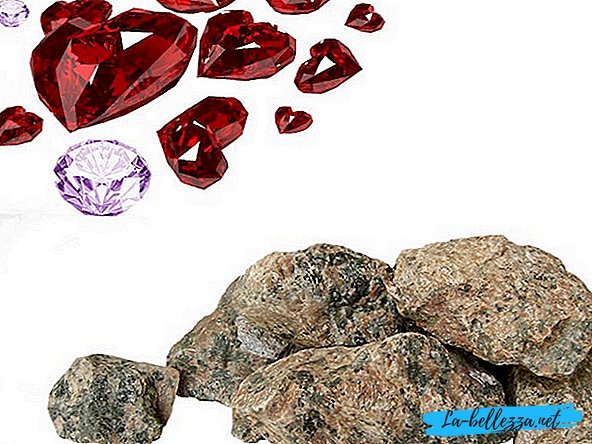
The state is located in the southern part of the center of Europe Croatia. It occupies the west of the Balkan Peninsula. Recently, Croatia is an independent state. She received this status in 1991.
The country shares borders with Slovenia (in the north-west), Serbia and Hungary (in the north-east), Bosnia, Montenegro and Herzegovina (in the south), the western borders lie along the coast of the Adriatic Sea.
The national currency is the kuna. This situation may change by 2013, when the country enters the European Union.
On the territory of Croatia, 4.48 million people live, 89% of which are Croats. The most representative diasporas are Serbs (4.5%), the remaining nationalities are slightly represented, they account for less than 0.5% - these are Hungarians, Bosnians, Slovenes, Albanians, Romanians and others.
The predominant religion in Croatia is Catholicism. The share of believers is 87.8% of the total number of religiously minded people. Orthodoxy accounts for 4.4%, Islam makes up 1.3%, and atheists make up about 5%.
The official language is Croatian. But in view of the multinational composition, the country also uses Italian, Hungarian, Czech, Albanian and other languages.
Croatia - the capital and major cities
The capital of this state is the city of Zagreb. It is also the largest cultural and industrial center of Croatia. The population is 784.9 thousand people. The city is located on the Sava River (a tributary of the Danube).
The most prominent places of Zagreb are the University with 28 faculties, 22 museums, 16 theaters and 31 art galleries.
Other major cities in Croatia are Split, Osijek and Rijeka.
Croatia - holidays and tours
The Adriatic Sea and its islands have always been an attractive destination for tourist trips. Therefore, Croatia pays the most direct attention to the development of the tourism sector.
At the end of the military conflicts of the late 90s, tourism in this country began to gain unprecedented momentum. Most vacationers agree that the best time to relax in this country is summer and early autumn. At this time, you can combine an excursion program with relaxation on the beaches.
Croatia is considered the refuge of nudists, since a fairly large number of beaches are open to naturist centers operating on a commercial basis.
Another feature of holidays in Croatia is the ability to have fun while sailing. This type of active tourism is supported at the state level.
As in any other country, the excursion program is an indispensable part of travel. On the territory of the state there are a large number of old mansions and castles, which at all times attracted the attention of visitors.
The traditional option of a beach holiday in Croatia is available in most cities located in the coastal zone. The water here is so clean and clear that you can see stones at a depth of 50 meters. There is no cleaner sea than here in all of Europe. The most significant resort areas are Pula, Split and Dubrovnik.
For health-improving holidays, Croatia offers its guests a whole region, an ecologically clean area. It is located 50 km from Zagreb. Modern thermal spas are built here, the specialization of which is the treatment of the musculoskeletal system, nervous system and heart.
The Neftalan medical center, located in Ivanich Grad, is completely unique in its working principle. Treatment of skin diseases, blood vessels, muscle and bone tissue, as well as peripheral nerves, is carried out using special oil.
For active time, Croatia offers diving classes. The best place for such entertainment is the island of Istria.
Croatia - Attractions
In 1895, the country's most famous theater was created - the Croatian National Theater. It is located in a beautiful building, which is called the pearl of Zagreb.
Among museums, the Mimar Museum is most popular. Its exposition has 3.7 thousand of the most valuable works of art. In addition, the most visited places in Zagreb are the Klovich Palace, the Gallery of Old Masters, and the Museum of Modern Art.
In the Lower City (part of Zagreb) is located Ban Josip Jelacic Square. It is surrounded by buildings of cultural and historical value and belonging to different styles and eras.
The largest square in Zagreb is King Tomislav Square. It is also a park area of the city. The train station building is located on its southern side, and the art pavilion is located in its northern part.
Croatia - weather (climate)
Due to its natural location, the territory of Croatia immediately captures three climatic zones: a continental climate is widespread in the north of the country, mountain and semi-mountain in the center, and Mediterranean on the coast.
The most contrasting climate is in the continental zone. It has a harsh winter (with temperatures up to -30 degrees) and a rather hot summer (up to +30 degrees). In mountainous areas, winters are milder, with temperatures up to -5 degrees and cool (up to +20 degrees) in summer, and on the coast the mildest and most pleasant climate - in winter up to +5, in summer - up to +30 degrees.
Weather in Croatia now:


Croatia - Cuisine
Due to the fact that the cuisine of Croatia is very diverse, it is often divided into regional types. The food prepared on the coast differs significantly from the dishes of the central regions.
In the center of the country, simple but very tasty treats are most often prepared. These are steaks, cream donuts, salami sausage, mustard, stewed potatoes.
On the coast, preference is given to delicacies caught right there from the sea. The abundance of fresh fish, crayfish, which are considered the best in the world, makes it possible to prepare delicious dishes. The most common and easiest way to cook fish is grilling. In addition, fish is boiled, stewed, pickled. Other seafood - shellfish, lobsters and shrimps, meet the highest quality international standards.
Since there are many vineyards in Croatia, the presence of good wine is one of the traditions of this country. Cabernet, Merlot, Plavac, Malvasia and many other varieties of varieties can be tasted by tourists and appreciate their unforgettable refined taste.
The most favorite meat delicacy in Croatia is considered to be prosciutto. It is made from pork leg - the ham is smoked and dried in the wind.
In the mountainous regions of Croatia, cuisine is less diverse, due to the climatic features of the zone. Here, most often they cook food on the grill, quickly and simply. They prefer jacket potatoes and roast lamb or pork. Venison is often on the table. Since the mountains are rich in berries, mushrooms, forest fruits and honey, all these components have become an integral part of cooking.
Croatia - interesting facts
Wearing ties began in Croatia. This happened during the Thirty Years War. The French, so fond of all sorts of unusual accessories in clothes and everyday life, saw that the Croatian warriors tied their scarves around their necks. The French quickly adopted this, and designated the accessory with the word "Cravate", which now translates as "tie."
In Russian, this accessory also has a different origin, German. The German neckerchief was designated by the name "Halstuch".
Croatia - visa application
Until October 31 of this year, Russian citizens do not need a visa to enter Croatia. The visit period is not more than 90 days.
If underage children are sent on a trip, they fit into the passport of one of the parents, or they should be issued a passport.
If the child leaves with one of the parents, a notarized consent of the second relative will be required, giving the teenager the right to travel outside Russia.
Croatia - Embassy
In Moscow, the Embassy of Croatia is located at 16/10 Korobeynikov Lane. Tel .: t. 211-40-33.
Map of Croatia












